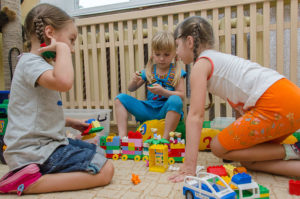Introduction to Solving Problems Using Volume and Surface Area
 Josie is a kindergarten teacher and wants to make felt toys for her students. These felt toys will be cylinders, meant to replicate cans. She wants to put the felt toys in the new play kitchen in her classroom. To find the amount of felt she needs, Josie will need to calculate the surface area of the cans she plans to make. This chapter will explain how to find surface area of different objects, including cylinders.
Josie is a kindergarten teacher and wants to make felt toys for her students. These felt toys will be cylinders, meant to replicate cans. She wants to put the felt toys in the new play kitchen in her classroom. To find the amount of felt she needs, Josie will need to calculate the surface area of the cans she plans to make. This chapter will explain how to find surface area of different objects, including cylinders.
Learning Outcomes
By the end of this section, you will be able to:- Find volume and surface area of rectangular solids
- Find volume and surface area of spheres
- Find volume and surface area of cylinders
- Find volume of cones
readiness quiz
- Evaluate [latex]{x}^{3}[/latex] when [latex]x=5[/latex].If you missed this problem, review [link].
- Evaluate [latex]{2}^{x}[/latex] when [latex]x=5[/latex].If you missed this problem, review [link].
- Find the area of a circle with radius [latex]\frac{7}{2}[/latex].If you missed this problem, review [link].
- Read the problem and make sure you understand all the words and ideas. Draw the figure and label it with the given information.
- Identify what you are looking for.
- Name what you are looking for. Choose a variable to represent that quantity.
- Translate into an equation by writing the appropriate formula or model for the situation. Substitute in the given information.
- Solve the equation using good algebra techniques.
- Check the answer in the problem and make sure it makes sense.
- Answer the question with a complete sentence.
Licenses & Attributions
CC licensed content, Shared previously
- Kindergarteners Playing. Authored by: UNICEF Ukraine. Located at: https://commons.wikimedia.org/wiki/File:UNICEF_DSC_9422_(21243407812).jpg. License: CC BY: Attribution.
CC licensed content, Specific attribution
- Prealgebra. Provided by: OpenStax License: CC BY: Attribution. License terms: Download for free at http://cnx.org/contents/[email protected].
